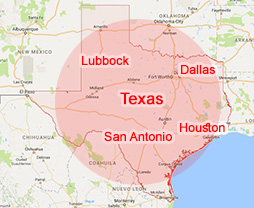Blood Draw Issues in Driving While Intoxicated Arrests Part 3
Hospitals have more viruses, more bacteria! In fact people pick up infections, more easily in a hospital environment then they would at home!
That’s why hospitals show act to try to get people healthy and get people out of the hospital because they acquire more infections and more diseases within the hospital. Secondly, a lot of people that draw blood really don’t have these qualifications! While they might be a phlebotomist or they might have, or be a phlebotomist by training they don’t have any license! And you think about that! In Texas you have to have a license to cut hair! But you don’t need a license to draw somebody’s blood. All it takes is some training and watching it! But truth is a lot of mistakes are made in hospital! Ask any nurse.
So to look at accepted medical practices when you’re thinking about these cases, think about was this done properly about this particular person! I know the case law when you talk about search warrants and was it taken by a qualified medical technician and the court of criminal appeals comes back so well that doesn’t really mean when it says and anybody can take it! Go back to Schmerber, reasonable, reasonable test! Because in schmerber they talked about we’re not presented with if it were administered by police in the privacy at the stationhouse. To tolerate searches under these conditions might be to invite or an unjustified element of personal risk infection or pain! And I think that’s where the focus should be because there are a lot of time you’ll see our clients coming to your office! They’ve got a big giant purple bruise, and you should be taking pictures of that! So that’s where the jury can see the effects and the aftermath of that.
Then of course then we had Beeman vs. State in Texas in 2002 and the face of a refusal in implied consent. They said you can obtain a search warrant and go ahead and acquire blood that took police officers basically turned them into the vampires and that is the cinema theatrics!
So, here’s the outset! We need to be talking and thinking about if okay; if that’s where we’re going to focus on well how do we do it right? What’s the protocol? What’s the standard operating guide line? So there’s sources and resources that we can use upon to become these experts. And that is the society of “Forensic Toxicologist”! The CAP; you’ve also got ISO 17025. This is really important! You’re talking about putting a standard in place with calibrators of known values, everything is pre-determined and we know that this, when you measure against something against something you know that’s exactly what you’re getting!
In blood test, we don’t really have a standard. These are your Texas blood alcohol testing regulations. That’s it, there’s nothing in there! They test breath. The scientific director that apartment of public safety is, is putting in some standard operating guidelines. The SOG’s, that these are the things that technical supervisors have to do! These are the things the, the breath test operator have to do. This is how the machine needs to be maintained. This is how it’s verified. This is how the calibration is checked. These are the maintenance things that are done. these are all the things that are required but in Texas there is no standard! None!
So and a Dallas to police department. When they test blood! They use different standard, then the Houston police department and the Austin police department and the San Antonio Police department, Bare County Medical crime land! Harris County Medical crime land! Swifts in Dallas! They’re all going by a different standards and who gets to set that standard? They do! And you know what happens when they get back logged.
They edit and cut out certain portions of standard operating guidelines to cut corners to save time. I think that’s freighting! If you look at the EPA and you buy soap and there are certain things of FDA, they have standards in place that these products must meet certain specifications. It must have certain level of these things. These are protections in place to make sure these products are safe for us.
Environmental Protection agency has standards! So GC ‘’Gas Chromatography’’ is not just use for ethanol testing, it’s used all over the country all over the world for different reasons, and they have standards in place and if they look how ethanol blood testing was done, they’d be absolutely appalled. When you tell them about that these scientists, they just can’t get over the fact that there are no standards.
So one of the things you can do in terms of your cross examination, talking with the analyst on the, the witness stand is talk about the American society of crime laboratory directors, this is called ASCLD and ASCLD really does not set the ceiling, they really just set the floor of these are the requirements for these crime labs to the accreditation to acquire that. These are the things that they must meet at a bare minimum and so, with that they talk about the collection, the transportation, the receiving, the storage and then ultimately the analysis and the reporting.
These are the things that we focus on. If you’re in your cross examination, write these things out on you isle chart and you’ve got your outlines for where you’re going to cross-examine. It’s very difficult to take an analyst one on one to talk about their analysis. More than likely unless you’ve got something blatant and you got an expert to come back and rebut that. It’s going to be very difficult again unless they’ve cut corners and they haven’t followed their standard operating guidelines, it’s going to be very difficult to take that analyst one on one. And so, if you’re talking about error–well if you had problems with this sample regardless of how good your own analysis would be, you still got a problem right, if Junk in junk out or garbage in garbage out! So there is where you go, so you talk about the collection of the transportation.






